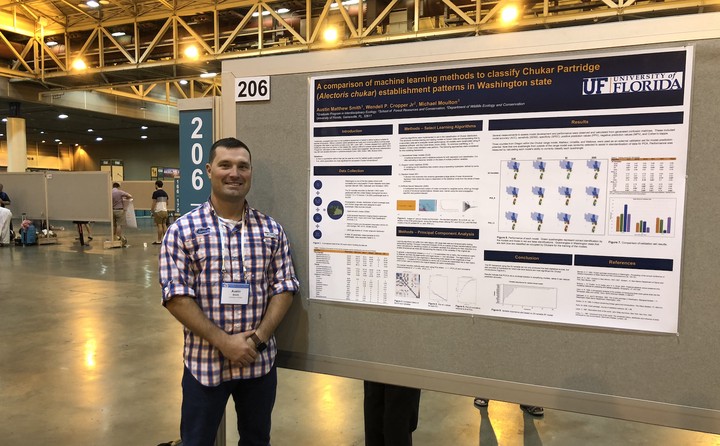
Abstract
Background - Better understanding and management of species populations require information on habitat requirements. Modeling species presence-absence as a function of environmental variables is one approach to address this question. Game bird introductions are regularly implemented throughout the world, even when little information of the species’ needs are known. The Chukar partridge (Alectoris chukar) was used as a test species for this study. Data related to site-level factors were collected and analyzed, which include physiography, climate, land-coverage type, and habitat range in an effort to understand Chukar habitat needs in Washington state and distinguish which algorithms are best suited when limited to these data types. Generalized linear models (GLM), support vector machines(SVM), random forests (RF), and artificial neural networks (ANN), were utilized for this experiment. Principal component analysis (PCA) was also implemented in an effort to reduce variable dimensionality. Results - Five measurements were recorded to assess the classification rate of each model , which include predicted accuracy (ACC) , sensitivity (SENS), specificity (SPEC), positive prediction value (PPV), negative prediction value (NPV), and Cohen’s kappa (Kappa). Results for this study indicate the RF models provide the most accurate predictions for all of these test. To test the predictive potential of these models, an external validation data set was further analyzed. We tested the predicted accuracy for three counties in Oregon where Chukars are present. The random forest model correctly identified 79% of sites with the ANN and SVM scoring 51% and GLM 41%. Two methods of PCA transformation were further applied to each model. The first involves retaining eigenvectors with eigenvalues greater than one and the second involves specifying a minimum degree of cumulative variance as a threshold for inclusion. These results reduced model accuracy, implying reduce dimensionality is not always necessary. Variables related to climate and slope quality were found to be the most important predictors of Chukar distribution and grassland landcover-type as the most suitable habitat. The results indicate RF models provide more useful estimates for species habitat requirements.